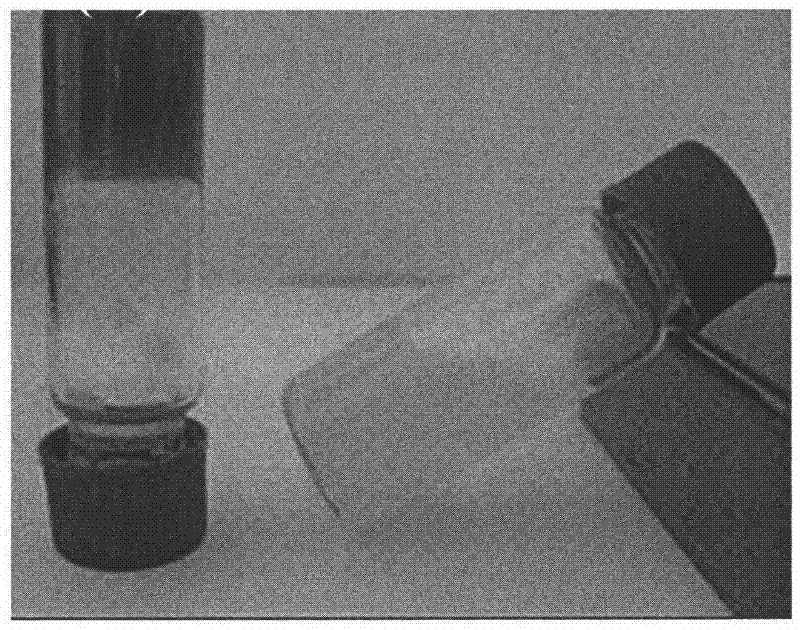Method for preparing cellulose composite aerogel
A technology of composite aerogel and cellulose, which is applied in the field of fine chemical materials to achieve the effects of less solvent pollution, wide source of raw materials and low price
- Summary
- Abstract
- Description
- Claims
- Application Information
AI Technical Summary
Problems solved by technology
Method used
Image
Examples
Embodiment 1
[0020] Sodium hydroxide / thiourea / water is formulated according to the ratio of 9.5:4.5:86. After freezing for 8 hours at -8°C, add cellulose dried in a vacuum oven at 50°C for 24 hours. The viscosity-average molecular weight is 5.4×10 4 , at room temperature using a stirring rate of 3000 rpm mechanical stirring for 5 minutes to prepare a concentration of 10% cellulose solution, then add 0.1% graphene oxide relative to the cellulose mass, the surface area and thickness of graphene oxide About 100:1, ultrasonic dispersion for 1 hour to obtain a composite solution. The composite solution was left at room temperature for half an hour to obtain a composite gel, and the gel was placed in deionized water to exchange the solvent, and the water was changed every 1 hour until the pH value of the exchange water reached neutrality. Then the obtained solid was freeze-dried at -50°C, 60Pa for 24 hours to obtain the final cellulose composite airgel. The compression performance test results ...
Embodiment 2
[0022] Sodium hydroxide / thiourea / water is prepared according to the ratio of 10:6:84. After freezing for 15 hours at -8°C, add cellulose, and its viscosity-average molecular weight is 5.4×10 4 , at room temperature using a stirring rate of 5000 rev / min mechanical stirring for 10 minutes to prepare a cellulose solution with a concentration of 10%, then add 0.1% single-walled carbon nanotubes relative to the cellulose mass, the aspect ratio is about 50:1, ultrasonic dispersion for 1 hour to obtain a complex solution. Place the composite solution at room temperature for half an hour to obtain a composite gel and place the gel in 5% sulfuric acid solution for 5 minutes, then put it into deionized water to exchange the solvent, and change the water every 1 hour until the pH value of the exchange water Reach 8. The resulting solid was then freeze-dried for 12 hours to obtain the final cellulose composite airgel. The compressive performance test results show that the compressive st...
Embodiment 3
[0024] Others are the same as in Example 1, but the solvent used is sodium hydroxide / urea / water in a proportion of 9:5:85 as a solution. Compared with the pure cellulose aerogel, the compressive strength and modulus of the final prepared cellulose composite airgel were increased by 12 and 30%, respectively.
PUM
 Login to View More
Login to View More Abstract
Description
Claims
Application Information
 Login to View More
Login to View More - R&D
- Intellectual Property
- Life Sciences
- Materials
- Tech Scout
- Unparalleled Data Quality
- Higher Quality Content
- 60% Fewer Hallucinations
Browse by: Latest US Patents, China's latest patents, Technical Efficacy Thesaurus, Application Domain, Technology Topic, Popular Technical Reports.
© 2025 PatSnap. All rights reserved.Legal|Privacy policy|Modern Slavery Act Transparency Statement|Sitemap|About US| Contact US: help@patsnap.com

